
Morton County is a county in the U.S. state of North Dakota. As of the 2020 census, the population was 33,291, making it the sixth-most populous county in North Dakota. Its county seat is Mandan. Morton County is included in the Bismarck, ND, Metropolitan Statistical Area.
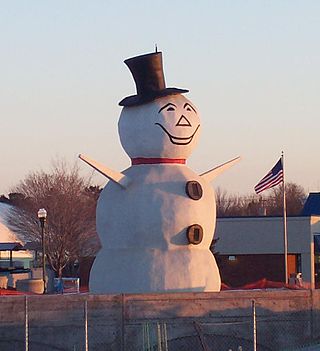
North Saint Paul is a city in Ramsey County, Minnesota, United States, located east-northeast of the city of Saint Paul. The population was 12,364 at the 2020 census.
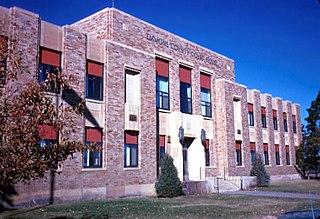
Linton is a city in and the county seat of Emmons County, North Dakota, United States. The population was 1,071 at the 2020 census. When compared with the other 356 cities in North Dakota, Linton ranks in the top twelve percent based on the number of its residents. The city serves as a governmental, commercial and business hub for Emmons County.
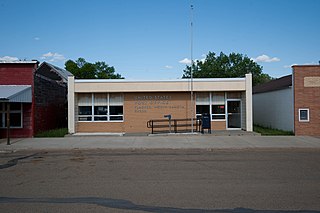
Flasher is a city in Morton County, North Dakota, United States. It is part of the "Bismarck, ND Metropolitan Statistical Area" or "Bismarck-Mandan". The population was 217 at the 2020 census. Flasher was founded in 1902.

Mandan is a city on the eastern border of Morton County and the eighth-most populous city in North Dakota. Founded in 1879 on the west side of the upper Missouri River, it was designated in 1881 as the county seat of Morton County. The population was 24,206 at the 2020 census. Across the Missouri River from Bismarck, Mandan is a core city of the Bismarck-Mandan Metropolitan Statistical Area.

The Territory of Minnesota was an organized incorporated territory of the United States that existed from March 3, 1849, until May 11, 1858, when the eastern portion of the territory was admitted to the Union as the State of Minnesota and the western portion became unorganized territory and shortly after was reorganized as part of the Dakota Territory.
The University of Mary is a private, Benedictine university near Bismarck, North Dakota. It was established in 1959 as Mary College.
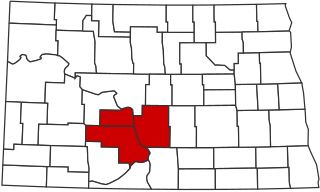
Bismarck–Mandan, colloquially referred to as BisMan, is the metropolitan area composed of Burleigh, Morton, and Oliver counties in the state of North Dakota.
Deadwood is a hamlet in Alberta, Canada within the County of Northern Lights. It is located on Highway 690, approximately 10 kilometres (6.2 mi) east of the Mackenzie Highway, 80 kilometres (50 mi) north of Peace River and 34 kilometres (21 mi) southeast of Manning.
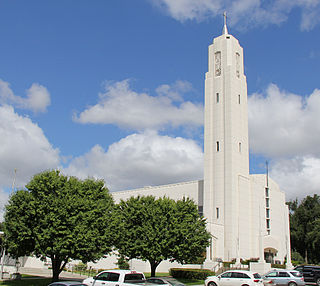
The Diocese of Bismarck is a Latin Church ecclesiastical territory, or diocese, of the Catholic Church in western North Dakota in the United States. It is a suffragan diocese in the ecclesiastical province of the metropolitan Archdiocese of Saint Paul and Minneapolis.

The Bismarck North Dakota Temple is the 61st operating temple of the Church of Jesus Christ of Latter-day Saints.
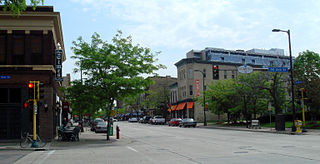
Northeast is a defined community in the U.S. city of Minneapolis that is composed of 13 smaller neighborhoods whose street addresses end in "NE". Unofficially it also includes the neighborhoods of the University community which have "NE" addresses, and the entirety of the Old Saint Anthony business district, which sits on the dividing line of "NE" and "SE" addresses. In the wider community, this business district, which is the oldest settlement in the city, is often identified as the heart of Northeast, in part because it lies across the Mississippi River from Downtown Minneapolis. Northeast is sometimes referred to as "Nordeast", reflecting the history of northern and eastern European immigrants and their language influence.

Huff is an unincorporated town in Morton County, North Dakota, United States. Huff is located about 20 miles south of Bismarck, North Dakota on the Missouri River at the top of Lake Oahe, a reservoir created by a dam. It is located on North Dakota Highway 1806. The Huff Archeological Site, a U.S. National Historic Landmark, is nearby to the southeast. As of 2018, the population is estimated to be less than 15, no businesses are currently in operation. Present at the townsite are the remains of a one-room school, an abandoned repair shop/gas station, a few occupied homes, and a restored stone church.
The Wagnus Massacre was an incident that occurred on the Deadwood – Bismarck Trail on July 17, 1877.

St. Anthony or Saint Anthony is an unincorporated town in southeastern Morton County, North Dakota, United States. It lies a short distance to the west of North Dakota Highway 6, south of the city of Mandan, the county seat of Morton County. It has the ZIP code 58566. In 2018, the population was estimated to be less than 30.

Hirschville is an unincorporated community in Dunn County, North Dakota, United States.

David Dennis Kagan is an American prelate of the Roman Catholic Church. He has been serving as bishop of the Diocese of Bismarck in North Dakota since 2011.

Trotters is an unincorporated community in Golden Valley County, North Dakota, United States. Trotters is located on North Dakota Highway 16, 28.3 miles (45.5 km) north of Beach. The community did not receive telephone service until 1972, and Highway 16, its only road, was paved in the 1980s.

St. Anthony's Roman Catholic Church is a historic church at 329 S. 3rd Street in Sterling, Colorado, United States. It was built in 1911 and was added to the National Register of Historic Places in 1982.
Louis Lawrence Renner, S.J., was an American Jesuit priest, historian, writer and academic. Renner, a professor of German who founded the Latin language program at the University of Alaska Fairbanks, specialized in the history of the Roman Catholic Church in Alaska. He authored several volumes and books on Alaska's Catholic history, including the extensive "Alaskana Catholica," which was published in 2005.


















